Jordan is a country rich in history, offering a unique window into ancient civilizations through its remarkable ruins. From the legendary city of Petra to the well-preserved Roman city of Jerash, Jordan’s ancient sites showcase a diverse cultural heritage that spans centuries. Each ruin tells its own fascinating story, providing visitors with a deeper understanding of the civilizations that once inhabited the region.
Petra: The Jewel of Jordan
Petra, one of the New Seven Wonders of the World, is undoubtedly the most famous of Jordan’s ancient ruins. Carved into the red sandstone cliffs, this ancient Nabatean city is a breathtaking example of rock-cut architecture. Al-Khazneh, or the Treasury, is Petra’s most iconic structure, a monumental tomb carved directly into the cliffs, with intricate details that have withstood the test of time. As visitors explore Petra, they will also find The Monastery (Ad-Deir), The Roman-style Theater, and the Siq, a narrow gorge that serves as the main entrance to the city. These extraordinary structures were part of an advanced civilization that mastered water management and trade routes, and Petra’s natural beauty only enhances the wonder of its engineering feats.
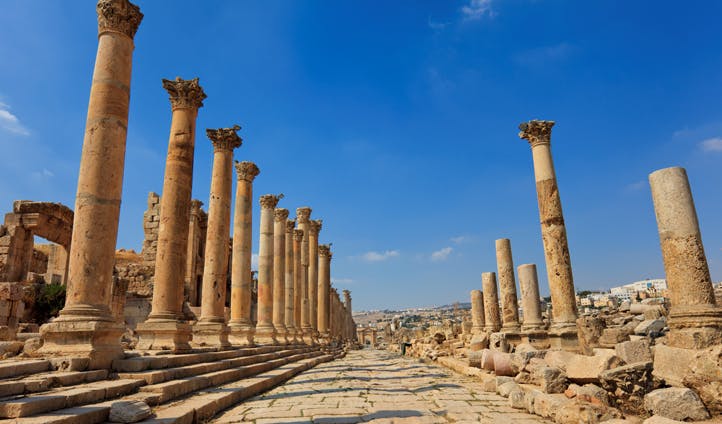
Jerash: The Pompeii of the East
Another gem in Jordan is Jerash, often referred to as the “Pompeii of the East” due to its exceptional preservation. As one of the largest and best-preserved Roman cities in the world, Jerash offers a fascinating look into Roman urban life. Hadrian’s Arch, built to commemorate Emperor Hadrian’s visit in 129 CE, greets visitors as they enter the city. The Temple of Artemis and the South Theater stand proudly within Jerash, showcasing the grandeur of Roman architectural style. What makes Jerash unique is its state of preservation, allowing visitors to walk down the Colonnaded Street and experience Roman public spaces as they once were. Even today, the South Theater is used for performances, demonstrating how the ancient and modern worlds intersect.
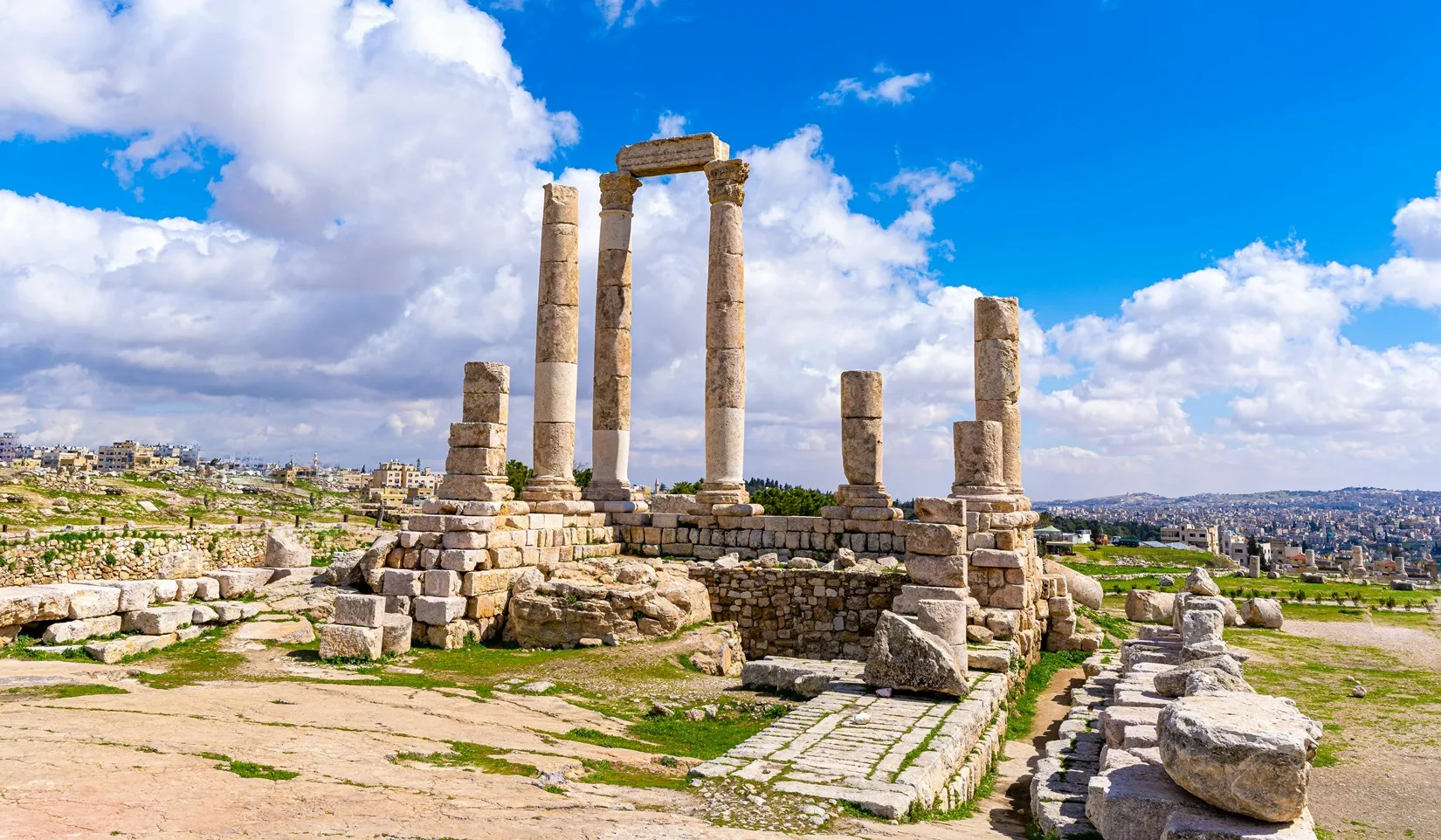
Ammonite Cities and Hellenistic Architecture
Jordan is also home to the ancient Ammonite cities, such as Rabbat Ammon (modern-day Amman), which offer insights into the early urban development in the region. Ancient fortifications, gates, and remnants of temples are scattered throughout the city. These Ammonite ruins demonstrate the area’s strategic importance during antiquity, as the Ammonites fought to defend their land from invading powers.
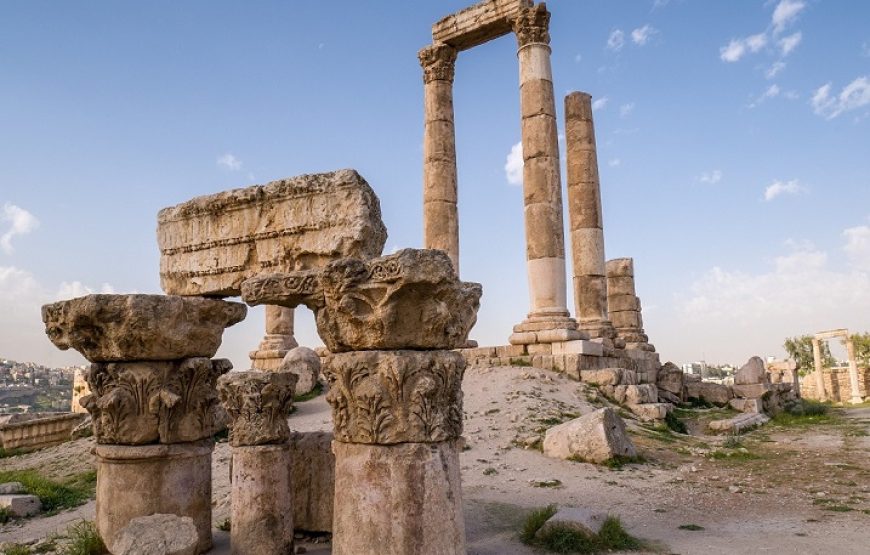
In the nearby Iraq al-Amir, visitors can explore Qasr al-Abd, a Hellenistic-era palace with fascinating architectural features, including large stone blocks and intricate carvings that tell the story of the region’s cultural blend during the Hellenistic period.
Crusader Castles: Medieval Jordan
Jordan’s history is also marked by the Crusader period, and the Kerak Castle and Shobak Castle stand as formidable reminders of the battles fought for control over the Holy Land. Kerak Castle, perched high on a hill, offers spectacular views and a glimpse into medieval military architecture. The Shobak Castle, also known as Montreal, was strategically located to oversee key trade routes and is a powerful symbol of Crusader control in the region. These castles, with their thick walls and towering fortifications, are testaments to the military prowess of the Crusaders and their legacy in Jordan.
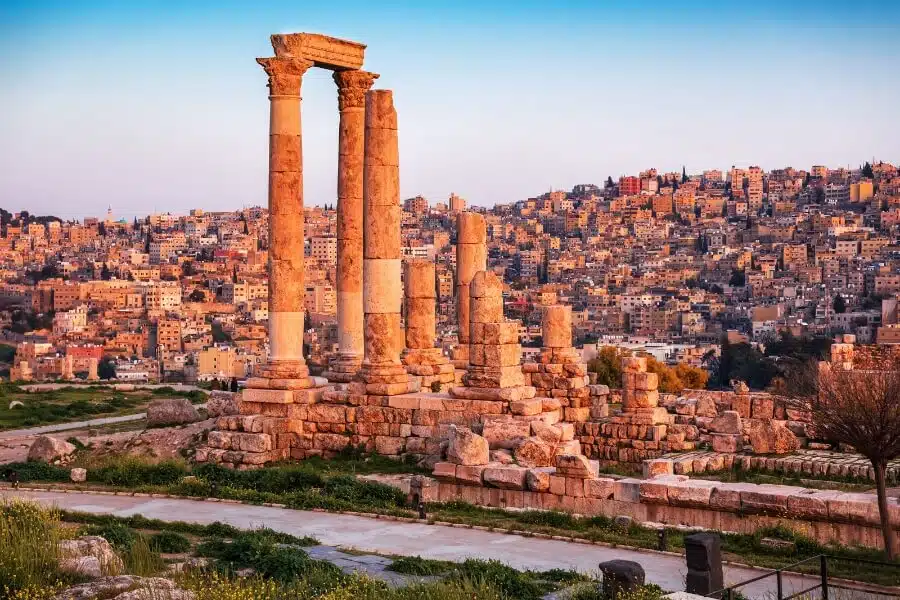
Wadi Rum: The Desert of Ancient Art
In addition to these ancient ruins, Wadi Rum – also known as the Valley of the Moon – is home to ancient petroglyphs that further enrich Jordan’s archaeological landscape. These rock carvings, created by various civilizations, give insight into the life and culture of early human settlements in the region.
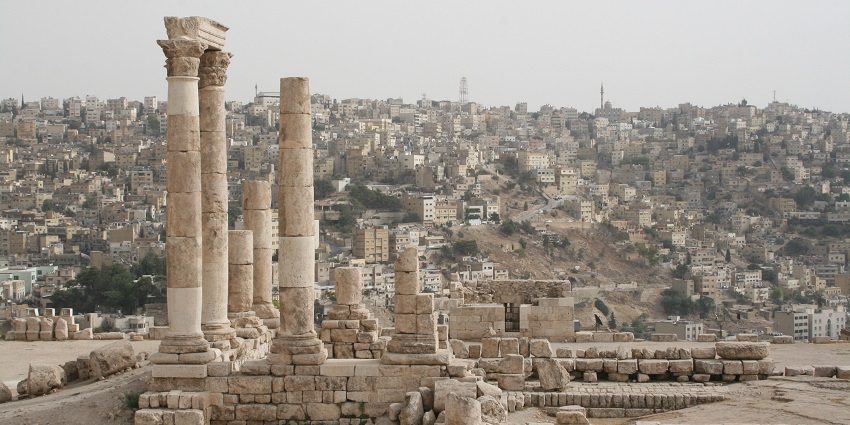
Conclusion: A Land Rich in History
Jordan’s ancient ruins are not just tourist destinations; they are living, breathing testaments to the ingenuity and diversity of the civilizations that once flourished here. From the rock-carved wonders of Petra to the Roman grandeur of Jerash, the ancient fortresses of the Crusaders, and the Ammonite cities, Jordan provides a fascinating narrative of human history. Its ruins are a captivating blend of history, culture, and natural beauty, making Jordan a must-visit destination for history lovers, archaeologists, and anyone seeking to understand the complexities of the ancient world.

